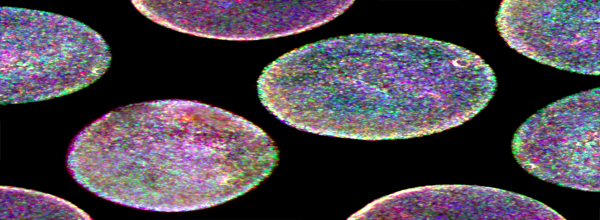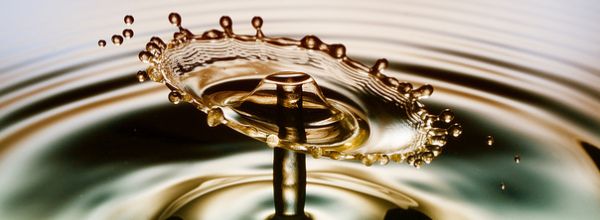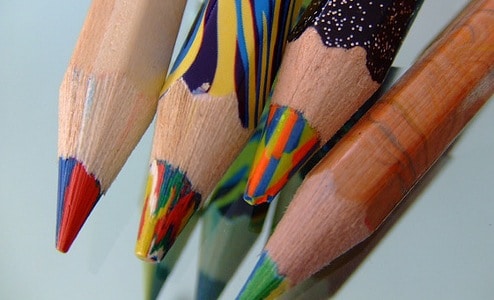Bis-Tris Gels: Their Key Advantages and How to Prepare Them
Fat and blurry bands on your SDS-PAGE gel can leave your experimental question unanswered. Learn how you can sharpen up your bands and get much greater resolution by using Bis-Tris gels.
Join Us
Sign up for our feature-packed newsletter today to ensure you get the latest expert help and advice to level up your lab work.

Fat and blurry bands on your SDS-PAGE gel can leave your experimental question unanswered. Learn how you can sharpen up your bands and get much greater resolution by using Bis-Tris gels.

In-cell Westerns are a powerful technique that has enhanced how researchers analyze protein expression levels and signaling pathways within fixed cells. Learn about their primary advantages, applications, and some of the best tech and products to perform them.

Discover how Ponceau S works, how to perform staining, and get a detailed guide to interpreting what the staining means when troubleshooting your failed blots.

Are you struggling with ugly and unreadable western blots? Here are 3 ways to optimize your western blot transfer and get blots to be proud of.

Knowing how SDS-PAGE works means that you can troubleshoot any issues in your experiment and tweak the setup to get publication-worthy figures. Find out how it works here.

In any application that uses antibodies for signal detection (e.g., Western blotting, ELISA, immunohistochemistry, or FACS), there are two approaches to antibody labeling: direct and indirect labeling. Standard Western blotting uses indirect labeling because you use a primary antibody to detect the target antigen, followed by a secondary antibody to which a detection molecule is…
Successful western blotting means achieving unambiguous results, and this requires a sensitive and specific antibody-antigen interaction. Consequently, high quality antibodies are critical for reliable and consistent western blotting. Western Blotting Process In the basic western blotting process, polyacrylamide gel electrophoresis (PAGE) separates a mix of proteins according to their molecular weights (denaturing gels) or their…

Speed up your SDS-PAGE with our time-saving tips and tricks!

How do you pick which antibody you should use in your assay? If you’re starting a new assay and need an antibody for the job, then selecting a new antibody from the plethora available could be high up on your to-do list.

Sonication is mostly used during preparation of protein extracts to help break apart the cell. Although most lysis buffers have buckets of detergent that lyse cell membranes, sonication just gives an extra hand in breaking everything apart. Sonication also breaks up, or shears, DNA in a sample—preventing it from interfering with further sample preparation. Have…

Through many trials, and lots of error, I learned that there are many considerations for mass spectrometry that might not be obvious to you as a molecular biologist. Common contaminants, even in small quantities, can mask important peaks in your mass spec data and have a huge impact on the final results.

A sprinkling of Bis-tris is all it takes improve your protein gels considerably. If you can afford it!

Western blotting uses electrophoresis and antibody-epitope affinity to give a semi-quantitative and (theoretically) clear measure of protein abundance. It’s a long procedure, filled with many steps—and even more room for error. Learning to troubleshoot certain problems is incredibly important for continued success with this technique. So what do you do when your final imaged product…

Want to save money on one of the most expensive steps of your Western blots? Then, use less antibody for significant cost savings!

In the previous installment of this series on western blotting, we addressed potential sources of error when your final product is completely bare. But alternatively, what do you do when too much background is the problem? You may have beautiful bands of interest—but if there is a bunch of non-specific binding, your quantification and data…

Western Blotting is a long established method for which the protocol varies little from lab to lab. However, there are kits available and some tweaks that can be made to the protocols that may improve your results and reduce the time it takes you to execute this popular technique. Save Time by Co-Incubating the Primary…

When running a quantitative Western blot, it’s crucial that your sample preparation is consistent. Incomplete protein extraction from one sample will skew your results when you compare it to the protein content of a sample that was extracted more thoroughly. And after the protein extraction, it’s important to handle the samples in an identical manner…

When it comes to choosing a molecular weight marker to run on your SDS-PGE gels, there are a lot of options out there. How do you know which one is right for you? Read on for tips on what to consider when choosing a standard for your protein gels. Before you go about selecting a…

So, you’ve done your experiment, prepped your samples, and run your SDS-PAGE gel. Now it’s time for the all-important transfer step, that tricky point that will determine the quality of your Western blot. Transfer times are empirical and based on your own particular samples, which means that there is no easy way to determine how…

I think that transferring Western blots is one the most enjoyable tasks to do in a lab: it’s quick, it’s messy, and on some gleeful level, it feels like a child’s art project gone wrong. Of course, it’s also finicky and slippery and prone to tiny pitfalls that can noticeably affect the quality of your…

For Western blot data to be reliable, it is important that you load known amounts of sample into each lane of the gel. This is of particular importance if you are doing a quantitative blot, where you really need to be able to compare band intensity in each sample. In this article, we’ll talk about…

Have you ever wished you could transfer the same SDS-PAGE gel twice? Sometimes, when you are blotting for many different proteins of similar size, stripping and reprobing multiple times can become impractical. Here’s a simple diffusion transfer method that can be used to generate duplicate membranes from a single gel: Protein transfer by this diffusion…

Western blotting is a common lab technique used to detect and analyze proteins. It also happens to be a really long and complicated procedure, with many steps along the way that are easy to mess up. How do you make sure that your Western blot is successful? Avoid the following five ways to destroy your…

If you have ever attempted to load a SDS-PAGE gel only to miss the well, stab the divider, and then watch helplessly as your sample squirts off into the wrong well, then this tip is for you. The fortunate among us are able to use pre-cast gels with the wells outlined on the gel plate,…

The eBook with top tips from our Researcher community.